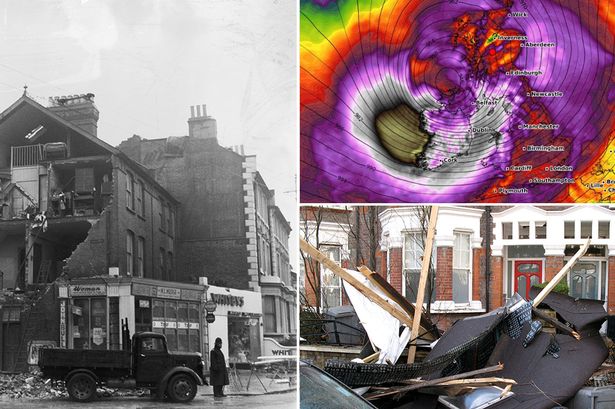The United Kingdom, accustomed to battling blustery storms and torrential rain, faces a less familiar meteorological threat: tornadoes. While not as prevalent as in other parts of the world like the United States, tornadoes are not entirely unheard of in the UK. Storm Eowyn, the latest tempest to sweep across the British Isles, brought with it not only the expected gale-force winds and heavy downpours but also the unusual issuance of tornado warnings for certain regions. This prompts a closer examination of the phenomenon of tornadoes in the UK, their formation, frequency, and the potential risks they pose to the public and infrastructure.
Tornadoes, violently rotating columns of air extending from a thunderstorm to the ground, are typically associated with specific atmospheric conditions. These conditions include warm, moist air at low levels, cool, dry air aloft, and wind shear – a change in wind speed and direction with height. This combination of factors creates instability in the atmosphere, allowing for the development of supercell thunderstorms, the type most commonly associated with tornadoes. While the UK’s climate doesn’t consistently present these ideal conditions, they can occasionally occur, especially during transitional seasons like spring and autumn when temperature differences are more pronounced. Storm Eowyn, occurring during the transition into spring, likely possessed the necessary atmospheric ingredients to generate the localized conditions conducive to tornado formation, hence prompting the warnings.
Although tornadoes are relatively rare in the UK, their occurrence isn’t unprecedented. Historical records and anecdotal evidence suggest that the UK experiences an average of 30-35 tornadoes annually, a figure significantly lower than the thousands reported in the US. However, this lower frequency doesn’t diminish the potential destructive power of these localized weather events. British tornadoes, while generally less intense than their American counterparts, can still pack wind speeds exceeding 100 mph, capable of causing significant damage to property, uprooting trees, and disrupting power lines. The relatively small size and localized nature of these tornadoes often mean that their impact is confined to smaller areas, unlike the widespread devastation that can be witnessed with larger, longer-track tornadoes.
The rarity of tornado warnings in the UK often contributes to a lack of public awareness and preparedness. Unlike regions where tornadoes are a common threat, the UK doesn’t have the same ingrained culture of tornado drills and safety procedures. This can leave residents vulnerable when warnings are issued, unsure of the appropriate actions to take to protect themselves and their property. The issuance of tornado warnings during Storm Eowyn highlights the need for increased public education on tornado safety. This includes understanding the warning signs, knowing where to seek shelter, and having a plan in place to communicate with family members during and after the event. Local authorities and meteorological agencies play a crucial role in disseminating timely and accurate information to the public, ensuring that warnings reach the affected populations and that guidance on appropriate safety measures is readily available.
Beyond immediate safety concerns, the potential for tornadoes in the UK warrants further investigation and research. Understanding the specific atmospheric conditions that lead to tornado formation in the British Isles is essential for improving forecasting accuracy and lead time for warnings. This research could involve detailed analysis of historical tornado events, studying the influence of local topography and land use on tornado development, and enhancing meteorological models to better capture the complex processes that give rise to these violent weather phenomena. Improved forecasting would allow for more targeted warnings, minimizing disruption to unaffected areas while maximizing the effectiveness of safety measures in areas at risk.
In conclusion, while the UK may not be synonymous with tornadoes, Storm Eowyn serves as a timely reminder that these powerful weather events can and do occur. The issuance of tornado warnings underscores the importance of public awareness, preparedness, and ongoing research to enhance our understanding and forecasting capabilities. By learning from these events and investing in research and public education, the UK can better mitigate the risks associated with tornadoes and ensure the safety and resilience of its communities in the face of these unpredictable and potentially destructive forces of nature.














